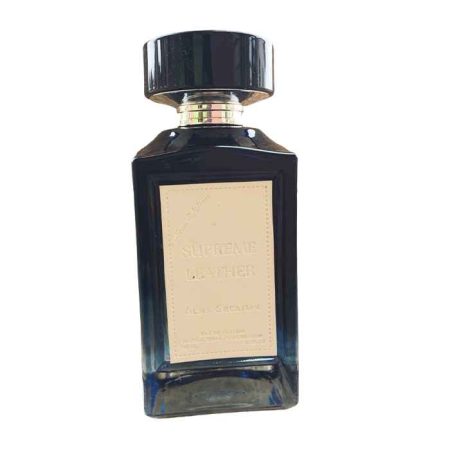Perfume, a blend of fragrant essential oils and aroma compounds, has a rich and fascinating history that spans thousands of years. From the sacred rituals of ancient civilizations to the glamorous fashion statements of today, the evolution of perfume mirrors the cultural and technological advancements of humanity.
Ancient Beginnings: The Origins of Perfume
The word “perfume” derives from the Latin “per fumum,” meaning “through smoke,” indicative of its earliest use. The Egyptians were pioneers in the use of perfumes, utilizing them in religious ceremonies, burial preparations, and daily hygiene. Fragrances were integral to Egyptian life, with scents like myrrh, frankincense, and cedarwood being highly prized. Pharaohs and nobility were often entombed with their favorite scents to enjoy in the afterlife.
The ancient Mesopotamians and Persians also made significant contributions to perfumery. Archaeological findings reveal that the Mesopotamians had developed methods for distilling fragrant oils. The Persians, known for their luxurious tastes, advanced the art of perfume-making significantly, contributing techniques and ingredients that would spread through the ancient world.
The Classical Era: Greece and Rome
The Greeks adopted perfume from the Egyptians, incorporating it into their daily lives and mythology. They attributed divine origins to various scents and believed that the gods themselves were responsible for creating aromatic substances. Hippocrates, the father of medicine, documented the therapeutic uses of fragrances, underscoring their importance in ancient Greek culture.
In Rome, perfume use became ubiquitous. The Romans not only indulged in personal fragrances but also scented their homes, baths, and even pets. The extensive use of perfume in Roman society is well-documented, with Pliny the Elder’s writings providing insight into the various oils and their uses. The fall of the Roman Empire led to a decline in perfumery in Europe, but the knowledge was preserved in the Byzantine Empire and later through the Islamic Golden Age.
Related: The History of Perfume: From Ancient Times to Luxury by Adminus.
The Islamic Golden Age: Preservation and Innovation
During the Islamic Golden Age, the art of perfumery flourished. Notable figures such as Avicenna (Ibn Sina) revolutionized the field by perfecting the distillation process, particularly in extracting essential oils from flowers like roses. This period saw the introduction of new techniques and ingredients, which were later transmitted to Europe via trade routes and the Crusades.
The Renaissance: A Rebirth of Scent
The Renaissance marked a revival of perfumery in Europe, particularly in Italy and France. With the reopening of trade routes, exotic ingredients from the Middle East and Asia became available. Italian perfumers, especially those in Florence, were at the forefront, creating elaborate and sophisticated scents. The marriage of Catherine de Medici to King Henry II of France brought Italian perfumers to the French court, establishing France as the epicenter of modern perfumery.
The 18th and 19th Centuries: The Rise of Modern Perfumery
By the 18th century, the use of perfume had become widespread in Europe. The French court of Louis XV was famously referred to as “la cour parfumée” (the perfumed court), where daily life was suffused with scent. Perfume bottles became works of art, reflecting the luxurious lifestyles of the aristocracy.
The 19th century saw significant advancements in chemistry, leading to the creation of synthetic fragrances. This period marked the beginning of modern perfumery, allowing for a broader range of scents and more affordable production. Iconic houses like Guerlain and Houbigant emerged, establishing the foundation for contemporary perfume industry practices.
The 20th Century: The Birth of Iconic Fragrances
The early 20th century was a golden age for perfumery, with the launch of legendary fragrances that remain popular today. In 1921, Coco Chanel introduced Chanel No. 5, a revolutionary scent composed of both natural and synthetic ingredients, crafted by perfumer Ernest Beaux. This era also saw the rise of designer fragrances, with fashion houses like Dior, Givenchy, and Yves Saint Laurent creating signature scents.
Post-World War II, the perfume industry expanded rapidly, driven by technological innovations and global marketing. The 1960s and 70s saw the emergence of bold, expressive fragrances that mirrored the social changes of the time, while the 1980s were characterized by opulent and powerful scents.
The 21st Century: A Blend of Tradition and Innovation
Today, the perfume industry is a blend of tradition and innovation. Artisanal and niche perfumery have gained prominence, offering unique and often unconventional scents. Sustainable and ethically sourced ingredients have become increasingly important to consumers, prompting the industry to adopt greener practices.
Technological advancements continue to shape the future of perfumery. Digital scent technology, artificial intelligence in fragrance creation, and personalized perfumes based on individual DNA are just a few examples of how the industry is evolving.
Conclusion
From the sacred rituals of ancient Egypt to the personalized, high-tech creations of today, the history of perfume is a testament to humanity’s enduring fascination with scent. Each era has contributed to the rich tapestry of perfumery, blending art, science, and culture into the fragrant experience we cherish today.











Leave a comment